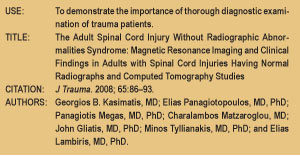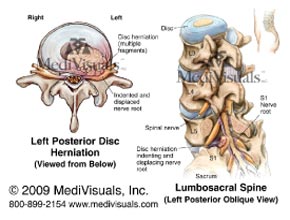Archives of Internal Medicine
June 29, 2010, Vol. 170, No. 12, pp. 1024-1031
Kausik K. Ray, MD; Sreenivasa Rao Kondapally Seshasai, MD; Sebhat Erqou, MD, PhD; Peter Sever, PhD; J. Wouter Jukema, MD, PhD; Ian Ford, PhD; Naveed Sattar:
The authors are from University of Cambridge
BACKGROUND FROM DAN MURPHY:
LDL-C means low density lipoprotein cholesterol. This is the “bad” cholesterol because it can plaque on the arterial wall. Ideally, it should measure less then 100 mg/dL. High is over 130 mg/dL.
In 2007, the New England Journal of Medicine published the JUPITER study. This study claimed that individuals with low cholesterol but high levels of inflammation [high sensitivity C-Reactive protein {hs-CRP}] could “significantly reduce all-cause mortality by 20%” by taking statin drugs. However, other studies have “questioned these findings as a chance or exaggerated observation.”
[Ridker PM, Danielson E, Fonseca FA, et al; JUPITER Study Group. Rosuvastatin to prevent vascular events in men and women with elevated C-reactive protein. N Engl J Med. 2008;359(21):2195-2207].
Therefore, these authors analyzed 11 randomized controlled trials involving a total of 65,229 participants to provide the most robust information to assess whether statins reduce all-cause mortality. All of the participants had high cholesterol, but none of them had cardiovascular disease. The study represented about 244,000 person-years of follow-up.
Statin drugs are commonly prescribed for two groups of patients:
|
Group I |
Group II |
|
Those that have established cardiovascular disease |
Those that do not have cardiovascular disease, but do have high cholesterol levels |
|
It is thought that statins for this group will prevent atherosclerosis and subsequent heart attack |
It is thought that statins for this group will prevent cardiovascular disease and heart attack |
KEY POINTS FROM DAN MURPHY
1) Some researchers have questioned the benefits of statins among individuals without cardiovascular disease, noting there is little evidence for reductions of all-cause mortality, and the potential to cause “serious unrecognized harm.”
2) These authors assessed the effect of statin therapy (compared with placebo) on all-cause mortality in individuals who did not have cardiovascular disease. They used 65,229 subjects and a follow-up period of 3.7 years:
|
Placebo Group |
Statin Group |
|
# of participants: 32,606 |
# of participants: 32,623 |
|
# of deaths: 1,447 |
# of deaths: 1,346 |
|
LDL Cholesterol level: 134 mg/dL |
LDL Cholesterol level with statins: 94 mg/dL |
|
Death rate: 4.44% |
Death rate: 4.13% |
3) Taking statin drugs lowered LDL-C by 40 mg/dL compared to the placebo group. This lowered the death rate by .31% (4.44% – 4.13%). The authors considered such a small reduction in death to be nonsignificant.
4) “This literature-based meta-analysis of 11 clinical trials involving 65,229 participants with approximately 244,000 person-years of follow-up and 2,793 deaths provides more reliable evidence than previously available on the impact of statin therapy on all-cause mortality among high-risk individuals without prior CVD. These data indicate that, over an average treatment period of 3.7 years, the use of statin therapy did not result in reduction in all-cause mortality.”
5) “There were, on average, an estimated 7 fewer deaths for every 10,000 person-years of treatment” with statin drugs.
6) “Our meta-analysis was based on data from only those individuals without clinically manifest CVD, including previously unpublished data, thus providing the most reliable effect estimates about the effect of statins in this population.”
7) “The present data suggest that the all-cause mortality reduction of 20% reported in JUPITER is likely to be an extreme and exaggerated finding as often occurs when trials are stopped early, hence, indicating that more liberal use of potent statin regimens, particularly in the setting of lower risk primary prevention subjects, is unlikely, at least in the short term, to have a major impact on all-cause mortality reduction.”
8) Fibrates are drugs that primarily lower triglyceride levels. A 2007 meta-analysis of randomized controlled trials published in the American Heart Journal “showed that, despite a significant reduction in nonfatal myocardial infarction, all-cause mortality was approximately 7% higher among individuals randomized to a fibrate.”
9) “In conclusion, based on aggregate data on 65,229 men and women from 11 studies, yielding approximately 244,000 person-years of follow-up and 2,793 deaths, we observed that statin therapy for an average period of 3.7 years had no benefit on all-cause mortality in a high-risk primary prevention population.”
10) “There is no evidence that prescribing cholesterol-lowering drugs known as statins to patients at risk of heart disease reduces their chances of premature death in the short term.”
11) “There is little evidence that statins reduce the risk of dying from any cause in individuals without heart disease.”
12) People taking statin drugs may have higher risks of liver dysfunction, kidney failure, muscle weakness and cataracts.
13) “While low-density lipoprotein (LDL), or ‘bad’ cholesterol levels, were higher among those taking placebo than those taking statins (134 milligrams per deciliter versus 94 milligrams per deciliter), this had no effect on the risk of premature death.”
COMMENTS FROM DAN MURPHY
The number needed to treat (NNT) is an epidemiological measure used to assess the effectiveness of a health-care intervention. The NNT is the number of patients who need to be treated in order to prevent one additional bad outcome. The ideal NNT is 1, where everyone improves with treatment and no one improves with placebo or in the control group. The higher the NNT, the less effective is the treatment.
NNT values are time-specific. A study’s NNT would be multiplied by the number of years of the study. For example, if a study ran for 3.7 years and it was found that the NNT was 321 during this 3.7-year period, in one year the NNT would have to be multiplied by 3.7 to correctly assume the right NNT for only the one-year period (in the example, the one year NNT would be 1,188).
Even though NNT is an important measure in a clinical trial, it is infrequently included in medical journal articles reporting the results of clinical trials.
In this study, the Number Needed to Treat (NNT) was 321 over a period of 3.7 years. The one-year NNT was 1,188:
1) This means for a period of 3.7 years for every 321 people taking a statin drug, only one is benefited, and 320 are not benefited, although they are spending about $1000/year on the drugs, and often experiencing numerous side effects.
2) This means, for a period of 1 year for every 1,188 people taking a statin drug, only one is benefited, and 1,187 are not benefited.
One can calculate the NNT using a calculator, or there are web pages that will do it for you by plugging in the numbers, such as www.graphpad.com, or just Googling “Number Needed to Treat” or “NNT.”
In the end, the consumer is paying for all of this, either through taxes (the government pays), or health insurance premiums, or cash.













 diagnostic dilemma relates to finding the traumatic lesion, and clinically correlating it to causality and, when appropriate, to persistent functional loss. There may be a single, straight forward answer to subjective complaints, or there may be a more subtle presentation that may involve several pain generating structures concurrently. The clinical examination is the most important step in determining the traumatic lesion, the patient’s diagnosis, treatment plan and subsequent prognosis.
diagnostic dilemma relates to finding the traumatic lesion, and clinically correlating it to causality and, when appropriate, to persistent functional loss. There may be a single, straight forward answer to subjective complaints, or there may be a more subtle presentation that may involve several pain generating structures concurrently. The clinical examination is the most important step in determining the traumatic lesion, the patient’s diagnosis, treatment plan and subsequent prognosis. In each issue, a clinical topic is covered by William J. Owens of the American Academy of Medical Legal Professionals (AAMLP), which is a national, non-profit organization, comprised of doctors and lawyers. The purpose of the organization is to provide its members with current research in trauma and spinal related topics, to keep the profession on the cutting edge of healthcare. Members may also sit for a Diplomate examination and be conferred a DAAMLP. The organization also offers support to the individual member’s practice.
In each issue, a clinical topic is covered by William J. Owens of the American Academy of Medical Legal Professionals (AAMLP), which is a national, non-profit organization, comprised of doctors and lawyers. The purpose of the organization is to provide its members with current research in trauma and spinal related topics, to keep the profession on the cutting edge of healthcare. Members may also sit for a Diplomate examination and be conferred a DAAMLP. The organization also offers support to the individual member’s practice. 
 Dr. Dan Murphy graduated magna cum laude from Western States Chiropractic College in 1978. He received Diplomat status in Chiropractic Orthopedics in 1986. Since 1982, Dr. Murphy has served part-time as undergraduate faculty at Life Chiropractic College West, currently teaching classes to seniors in the management of spinal disorders. He has taught more than 2000 postgraduate continuing education seminars. Dr. Murphy is a contributing author to both editions of the book Motor Vehicle Collision Injuries and to the book Pediatric Chiropractic. Hundreds of detailed Article Reviews, pertinent to chiropractors and their patients, are available at Dr. Murphy’s web page, www.danmurphydc.com TAC.
Dr. Dan Murphy graduated magna cum laude from Western States Chiropractic College in 1978. He received Diplomat status in Chiropractic Orthopedics in 1986. Since 1982, Dr. Murphy has served part-time as undergraduate faculty at Life Chiropractic College West, currently teaching classes to seniors in the management of spinal disorders. He has taught more than 2000 postgraduate continuing education seminars. Dr. Murphy is a contributing author to both editions of the book Motor Vehicle Collision Injuries and to the book Pediatric Chiropractic. Hundreds of detailed Article Reviews, pertinent to chiropractors and their patients, are available at Dr. Murphy’s web page, www.danmurphydc.com TAC.